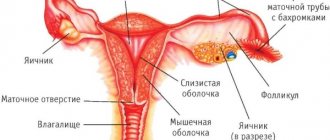Despite the fact that such a modern procedure as abdominal decompression is already widely used in gynecology, many women are not aware of its existence. Let's try to act as educators and tell you about everything that is currently known about abdominal decompression during pregnancy. We are sure that expectant mothers will find this information extremely useful. After all, thanks to a unique technique, you can get rid of many unpleasant conditions, while eliminating the use of medications and a long hospital stay. Interesting? Then start reading right now!
What is abdominal decompression?
The world learned about this physiotherapeutic miracle treatment method thanks to an American professor named Haynes. Through his efforts, a vacuum method was discovered for treating a wide range of pathologies, in particular gynecological ones. The principle of operation of abdominal decompression is extremely simple. While negative pressure is applied to the lower part of the body, normal levels are maintained in the upper part of the person’s torso. During pregnancy, pressure falls on the anterior abdominal and uterine walls.
The main indications for the use of abdominal decompression during pregnancy are improvement of uteroplacental circulation. In some cases, its use during childbirth to reduce pain is relevant.
This physiotherapeutic method of treatment is used not only in gynecology and obstetric practice. It also shows good results in traumatology, urology, and angiology. In this case, the qualifications of the specialist performing the procedure are of great importance. His skill is the key to solving your problem.
Therapeutic effect of abdominal decompression
The general principle of operation of this treatment method is clear. We propose to delve a little deeper into our topic and clarify the mechanism of its action during pregnancy.
So, negative pressure during the abdominal decompression procedure has, without exaggeration, a magical effect on the vascular walls of the abdominal area, as well as the pelvis. Thus, the positive effect extends to all organs located in the designated area. In particular, these are the kidneys, uterus, and appendages. Another bonus of this procedure is that it allows you to normalize blood circulation, significantly reduce tone, improve gas exchange rates, which directly affects the reduction of fetal hypoxia. The placenta begins to perform its functions in full, which is extremely important for your baby, as it contributes to his active growth and proper development.
But abdominal decompression also has a beneficial effect on the expectant mother herself. Thus, it is possible to reduce blood pressure, which quite often changes upward during pregnancy. Swelling, which especially bothers women in the second half of pregnancy, also goes away, and lymphatic drainage improves. Normalization of blood circulation also affects the productive functioning of the kidneys. We know that during pregnancy they have a double burden because they have to cope with a large volume of fluid.
Despite such a beneficial effect, reviews of the use of abdominal decompression during pregnancy are absolutely polar. Some women remain completely delighted, receiving the promised effect, while the other half not only does not receive a positive effect, but also experiences side effects.
Indications and contraindications for use
Abdominal decompression can be carried out either continuously throughout pregnancy or in a short course strictly as prescribed. In this section, we structure for your convenience the main indications for the use of abdominal decompression during pregnancy.
Find out if pregnant women are allowed to use Aquamaris.
You will learn how to give your baby Maltofer correctly here.
Let us immediately note that the vacuum method makes it possible to maintain pregnancy in 85% of cases, reduce the duration of inflammatory diseases and significantly reduce medication intake.
Thus, abdominal decompression is necessary in the case of:
- hypertonicity of the uterus;
- toxicosis (gestosis);
- delays in fetal development, including due to hypoxia;
- fetoplacental insufficiency;
- varicose veins of the legs, vascular diseases of the legs;
- inflammatory complications in the uterus, appendages;
- weakness of labor;
- pregnancy in women at risk.
I would like to clarify a little the last item on our list. The fact is that when a woman gives birth after thirty years of age and has several cases of miscarriages preceding the actual pregnancy, she automatically falls into the so-called risk group. The use of abdominal decompression during such a pregnancy allows you to reduce existing risks for the woman’s health and the general condition of the baby, as well as avoid complications during childbirth.
However, as with any type of treatment, there are a number of contraindications to the abdominal decompression procedure during pregnancy. The most significant of them:
- advanced phase of thrombophlebitis;
- acute stage of peptic ulcer;
- infectious and inflammatory diseases;
- oncology;
- heavy bleeding;
- third degree hypertension.
Your doctor will definitely keep these in mind when deciding whether abdominal decompression is necessary in your individual case.
Advantages of the method
- In 90% of cases, pregnancy can be maintained.
- For pathologies of pregnancy that require hospital conditions, outpatient observation is sufficient after the use of abdominal decompression.
- If hospitalization cannot be avoided, the patient's length of stay in the hospital is reduced.
- If inflammatory processes in the organs of the genitourinary system are diagnosed, then thanks to the method it is possible to speed up the healing process.
According to statistics, the use of abdominal decompression in women at risk reduces the risk of miscarriage, premature or pathological birth. Subsequently, children born to these mothers experience accelerated physical and mental development.
Method of performing abdominal decompression during pregnancy
The procedure is carried out as follows. The woman is placed in a special apparatus that resembles a sealed dome-shaped chamber. At the same time, it contains the lower part of the body, including the area up to chest level. The upper body and head are placed comfortably on the couch. By controlling a specially developed computer program, a negative, pulsating pressure is created inside the chamber. All you have to do is relax as much as possible and enjoy yourself. During the entire procedure, trained personnel must be present in the room to monitor your condition. If there is the slightest change for the worse, abdominal decompression must be stopped.
There are no strict time norms or regime of pressure applied. In each individual case, a unique set of all necessary indicators is selected to achieve the optimal effect of the procedure.
Learn about the peculiarities of gender-based parenting.
You will learn about the effectiveness of Fenistil for allergies here.
You can read what saline solution can be used for here:.
In addition to the contraindications listed above, your doctor will definitely conduct additional examinations, ask for a blood test, do an ultrasound and, only having a complete picture of your disease, will prescribe abdominal decompression or refuse to use it, preferring another method of treatment.
Despite the fact that the technique is quite new and does not have serious research, reviews of the use of abdominal decompression during pregnancy indicate its effectiveness and justification. If your attending physician recommends this procedure to you, you should listen to him and go for it with confidence in a positive result. If you follow all the precautions listed above, you actually do not risk anything, receiving a health-improving, therapeutic effect.
Treatment of threatened miscarriage
The advantage of the abdominal decompression method over other methods is that it allows you to eliminate or limit drug therapy. This advantage is of particular importance in the treatment of pregnant women (meaning antenatal protection of the fetus). Under the influence of abdominal decompression, pregnant women with a threat of miscarriage experience a cessation of pain, the tone and excitability of the uterus are normalized by relieving vascular spasm. There is a normalization of hemodynamics and trophism of the placental tissue due to an increase in the vascularization of the villi, a decrease in congestion in the maternal and fetal circulation.
At what time is ultrasound performed during pregnancy? How many times are ultrasounds done?
Health Diseases and Conditions Av. Maria Avetisyan
While waiting for a baby, the fairer sex will have to undergo numerous studies and undergo a lot of tests. So, before each appointment with a gynecologist, the expectant mother must donate blood and urine for testing. The results obtained allow us to judge the course of pregnancy and the woman’s health status. This article will discuss the timing of ultrasound examinations during pregnancy. You will find out the features of this diagnosis. You can also find out the generally accepted timing of ultrasound during pregnancy.
Ultrasound diagnostics
This type of research has been used for quite a long time. Every year there is an improvement in inspection methods. So, in modern medical clinics you can not only undergo a regular ultrasound, but also do research in several planes (3D and 4D).
Ultrasound diagnostics is carried out as follows. During the examination, the doctor places a special sensor on the patient’s body that sends impulses. This ultrasound is reflected from the organs and displays an image on the screen. The patient and the doctor cannot hear the ultrasound because it has very high frequencies.
It is worth noting that research can be carried out in several ways. At the earliest stages of embryo development, a transvaginal sensor is selected. The doctor applies a special conductive gel to it and inserts it into the vagina. Later in pregnancy, transabdominal ultrasound can be performed. In this case, a slightly different sensor is selected, which is applied to the belly of the expectant mother.
The only ADK in the Krasnodar region, located in the city of Sochi!
The peculiarity of the procedure is that it is difficult to determine generally accepted recommendations for the management of therapy; treatment is selected individually for each person.
“Family Clinic of Doctor Ekaterina Kurguskina” offers the services of qualified specialists who can create an effective course of treatment using high-precision equipment. Our physiotherapy department has a modern abdominal decompression device at its disposal, which will help you cope with health problems quickly and effectively.
Sign up for a consultation with specialists using one of the numbers that can be found in the “Contacts” section of the clinic’s website. Leave your questions in the feedback form, and we will definitely answer them.
Find out the cost to a specialist
Treatment of pregnancy toxicosis
When conducting sessions of abdominal decompression in patients with nephropathy, blood pressure decreases, since abdominal decompression causes a reflex decrease in the tone of peripheral vessels, increases blood flow in the abdominal region, reduces intra-abdominal pressure, which promotes better blood circulation in the kidneys and other abdominal organs, and Accordingly, it helps to increase diuresis and improve urine tests. Regular treatment with abdominal decompression protects the placenta and prevents the degree of damage that toxemia can cause. Abdominal decompression is especially effective in the treatment of early toxicosis and the initial stages of nephropathy.
At what stage is the first ultrasound done during pregnancy?
Immediately after a woman finds out that she is carrying a child, she begins to wonder when the first ultrasound is performed during pregnancy, because this feeling cannot be compared with anything. An amazing sight - a tiny droplet with a beating heart, which will soon become a child.
However, pleasant anticipation is often accompanied by anxiety, since this study can also reveal some possible abnormalities - lack of heartbeat, too small a fetus, or some other pathology of the baby’s development. But do not forget that only the results of an ultrasound scan are not enough to make a diagnosis. If there is any doubt, the doctor will certainly prescribe a re-examination. Let's consider at what stage of pregnancy the first ultrasound should be done, and what this procedure can show.
Periods of pregnancy at which routine ultrasound is performed
The ultrasound examination procedure is prescribed to each pregnant woman at a certain time, which makes it possible to timely identify the widest possible range of possible complications and diseases of the fetus, and determine subsequent pregnancy management tactics.
The first scheduled ultrasound is scheduled between the 11th and 14th weeks of pregnancy. This allows you to evaluate the anatomical features of the fetus and measure the thickness of the nuchal zone, which is a marker of Down syndrome.
During this period, an ultrasound is prescribed to determine the exact date, which makes it possible to obtain a more reliable result when taking a test for Down syndrome. This is due to the fact that the level of hormones in the blood significantly depends on the duration of pregnancy. Therefore, the result of a blood test at 14 weeks may be useless if a subsequent ultrasound examination reveals that the gestational age at the time of blood collection was actually 16.
Source
Indications for ADC
Abdominal decompression is mainly used in obstetrics, gynecology, and reproductive medicine, but the procedure can also be used to treat many other diseases.
| Obstetrics | · threat of miscarriage; · early/late toxicosis; hypoxia/threat of fetal hypoxia; fetal malnutrition; |
| Gynecology | · inflammatory diseases of the female genital organs; · dysmenorrhea; · infantilism; · primary/secondary infertility; |
| Urology | · male infertility; · varicose veins of the testicle; · chronic prostatitis; · urethritis; · erectile weakness; |
| Angiology | · atherosclerosis of the vessels of the lower extremities; · phlebeurysm; · trophic ulcers; |
| Traumatology | Fractures (the process of formation of bone calluses is doubled) |
| Gastroenterology | · liver diseases; · enterocolitis; · dysbacteriosis; |
| Proctology | rectal fissures; |
| Sports medicine | · preparation and rehabilitation; · recovery from injuries; |
| Cosmetology | prevention/treatment of cellulite, · elimination of excess fat deposits; |
| Neurology | · depression; · neuroses; · vegetative-vascular dystonia; · chronic fatigue syndrome; |
| Damage to the joints of the lower extremities | · deforming osteoarthritis; · metabolic-dystrophic polyarthritis; · aseptic necrosis of the femoral head. |
This is just a small list of health problems that an abdominal decompression device can help solve.










